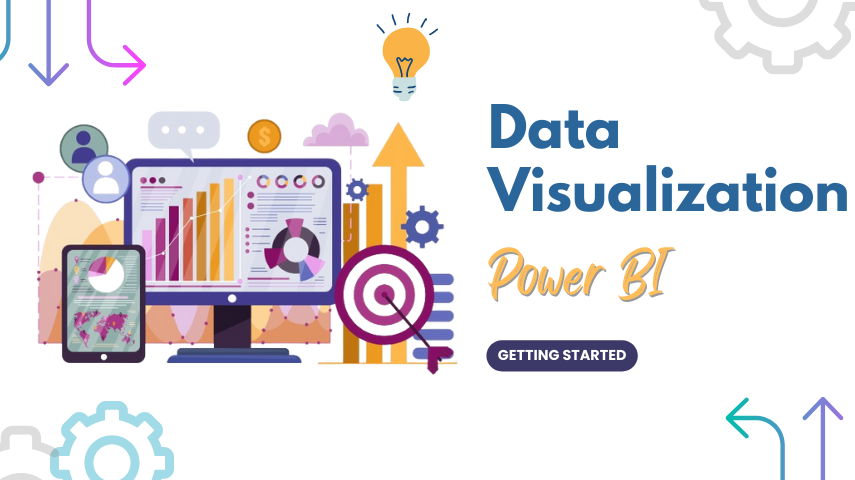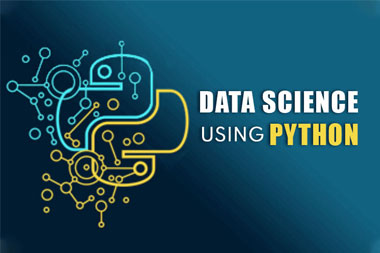Module 1: Introduction to Data Science and Power BI
- 1.1 What is Data Science?
- Overview of Data Science and its applications
- Data Science vs Machine Learning vs AI
- The role of a Data Scientist and Data Analyst
- 1.2 Introduction to Power BI
- Power BI Overview and Components (Power BI Desktop, Power BI Service, Power BI Mobile)
- Why Power BI for Data Science?
- Power BI Interface Overview
- Understanding Power BI Ecosystem: Data Models, Queries, and Reports
Module 2: Getting Started with Power BI Desktop
- 2.1 Installing Power BI Desktop
- Power BI Desktop Installation and Setup
- Navigating the Power BI Desktop Interface
- Power BI Workspace: Fields, Visualizations, and Filters Pane
- 2.2 Importing and Connecting Data
- Connecting to Data Sources: Excel, SQL Server, Web Data, APIs, CSV, and more
- Understanding Data Types and Relationships
- Importing Data from Multiple Sources
- Power Query Editor: Basic Data Transformation and Cleaning
Module 3: Data Preparation and Transformation
- 3.1 Power Query Editor: Basics
- Introduction to Power Query Editor
- Filtering and Sorting Data
- Removing Duplicates and Handling Missing Data
- Renaming Columns and Changing Data Types
- 3.2 Data Transformation Techniques
- Merging and Appending Queries
- Pivoting and Unpivoting Data
- Grouping Data for Summarization
- Using Calculated Columns and Measures
- Creating Custom Columns with M Language
- 3.3 Advanced Data Transformation
- Advanced Filtering and Transformation Techniques
- Working with Date/Time Data
- Conditional Columns and Row-Level Security
Module 4: Data Modeling in Power BI
- 4.1 Introduction to Data Modeling
- What is Data Modeling in Power BI?
- Understanding Relationships: One-to-One, One-to-Many, Many-to-Many
- Creating and Managing Relationships in Data Models
- 4.2 Introduction to DAX (Data Analysis Expressions)
- What is DAX and Why is it Important?
- Basic DAX Functions: SUM, AVERAGE, COUNT, and DISTINCTCOUNT
- Creating Calculated Columns and Measures
- Using DAX for Time Intelligence (e.g., Year-to-Date, Moving Averages)
- Logical Functions in DAX: IF, SWITCH, AND, OR
- 4.3 Advanced DAX
- Using DAX for Advanced Calculations (e.g., RANKX, FILTER, CALCULATE)
- Row Context vs Filter Context in DAX
- Time Intelligence Calculations (e.g., DATESYTD, DATESINPERIOD)
- Handling and Optimizing DAX Queries
Module 5: Data Visualization in Power BI
- 5.1 Introduction to Power BI Visualizations
- Overview of Different Types of Visualizations (Bar Charts, Line Charts, Pie Charts, etc.)
- Custom Visualizations in Power BI Marketplace
- Choosing the Right Visual for Your Data
- 5.2 Creating Basic Visuals
- Creating and Formatting Visualizations
- Customizing Titles, Legends, and Labels
- Using Conditional Formatting
- 5.3 Advanced Visualization Techniques
- Combining Multiple Visuals into Dashboards
- Using Slicers, Filters, and Drill-Through Features
- Interactive Visualizations: Tooltips, Buttons, and Bookmarks
- Working with Maps for Geospatial Data (Choropleth maps, ArcGIS Maps)
- 5.4 Designing Effective Reports and Dashboards
- Best Practices for Designing Visuals
- Creating User-Friendly Dashboards with Interactive Filters
- Using Report Themes and Branding
- Optimizing Performance of Reports
Module 6: Power BI for Advanced Analytics
- 6.1 Statistical and Predictive Analytics in Power BI
- Descriptive Statistics (Mean, Median, Standard Deviation)
- Using Power BI to Create Trend Lines, Forecasting, and Prediction
- Integrating Power BI with R and Python for Advanced Analytics
- 6.2 Data Mining and Pattern Recognition
- Introduction to Clustering and Segmentation in Power BI
- Using Power BI for Market Basket Analysis
- Time Series Forecasting with Power BI
- 6.3 Implementing Machine Learning Models
- Power BI Integration with Azure Machine Learning
- Using Pre-built Machine Learning Models in Power BI
- Building and Deploying Models for Predictions
Module 7: Sharing and Collaboration with Power BI
- 7.1 Publishing and Sharing Reports
- Publishing Reports to Power BI Service
- Sharing Dashboards with Stakeholders and Users
- Embedding Reports in Websites and Portals
- 7.2 Power BI Service Overview
- Introduction to Power BI Service
- Creating and Managing Workspaces and Apps
- Organizing and Managing Datasets in Power BI Service
- 7.3 Collaboration and Data Sharing
- Real-time Collaboration on Power BI Dashboards
- Setting up Data Refresh for Live Reports
- Collaborating with Teams via Power BI Integration with Microsoft Teams
- 7.4 Power BI Data Gateways
- Introduction to On-Premises Data Gateways
- Configuring Data Gateways for Automatic Data Refresh
Module 8: Power BI for Business Intelligence and Reporting
- 8.1 Key Performance Indicators (KPIs)
- Creating and Visualizing KPIs
- Conditional Formatting with KPIs
- Using KPIs for Business Insights and Reporting
- 8.2 Custom Visuals and Report Customization
- Developing Custom Visuals for Specific Reporting Needs
- Using Themes for Consistency in Reporting
- Advanced Report Customization with R Scripts and Python Scripts
- 8.3 Power BI for Financial and Operational Reporting
- Financial Reporting (Profit & Loss, Balance Sheet, Cash Flow)
- Operational Dashboards (Supply Chain, Inventory, Sales)
- Customer Insights Dashboards (Customer Satisfaction, Churn Prediction)
Module 9: Power BI Integration with Other Tools
- 9.1 Integration with Excel
- Importing and Exporting Data Between Power BI and Excel
- Using Excel Queries and PivotTables in Power BI
- Automating Excel Reporting with Power BI
- 9.2 Power BI and SQL Server
- Connecting Power BI to SQL Server Databases
- Writing SQL Queries in Power BI for Data Modeling
- Refreshing Data from SQL Server in Power BI
- 9.3 Power BI and Cloud Services
- Integrating with Azure SQL Database and Azure Data Lake
- Connecting Power BI to Cloud Data Sources (Google Analytics, Salesforce, etc.)
Module 10: Power BI Deployment and Performance Optimization
- 10.1 Best Practices for Power BI Deployment
- Power BI Governance and Security Best Practices
- Managing User Permissions and Roles
- Configuring Data Security and Row-Level Security (RLS)
- 10.2 Optimizing Power BI Reports
- Optimizing DAX and Data Models for Performance
- Best Practices for Data Querying and Model Relationships
- Reducing Report Load Times with Aggregations and DirectQuery
- 10.3 Scaling Power BI Solutions
- Managing Large Datasets and Reports
- Using Power BI Premium for Enterprise-scale Solutions
- Distributed Datasets and High Availability in Power BI



